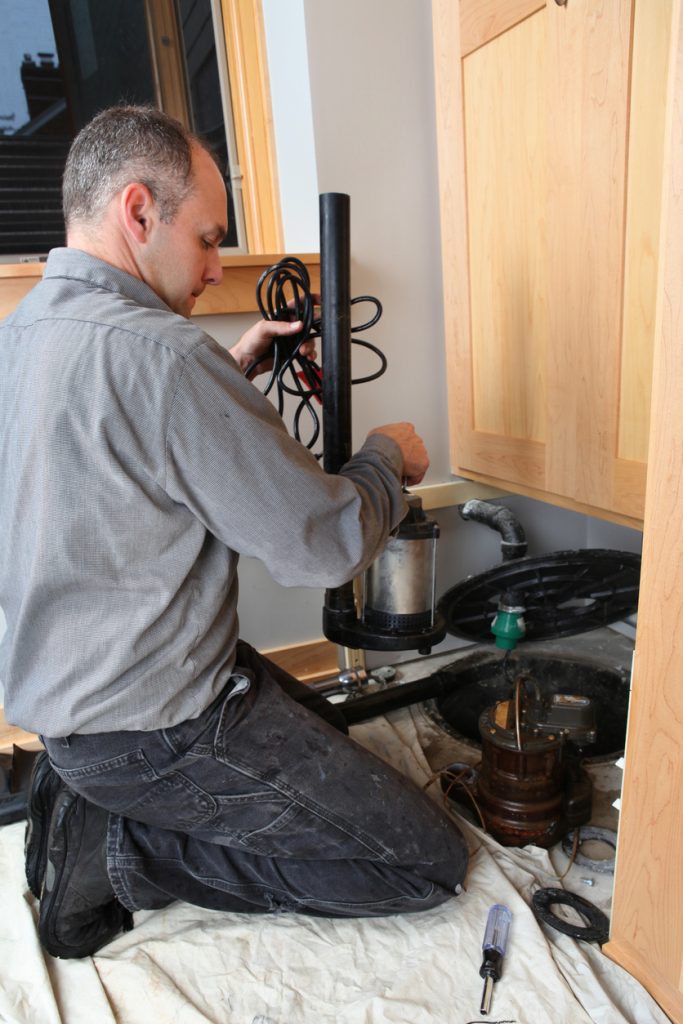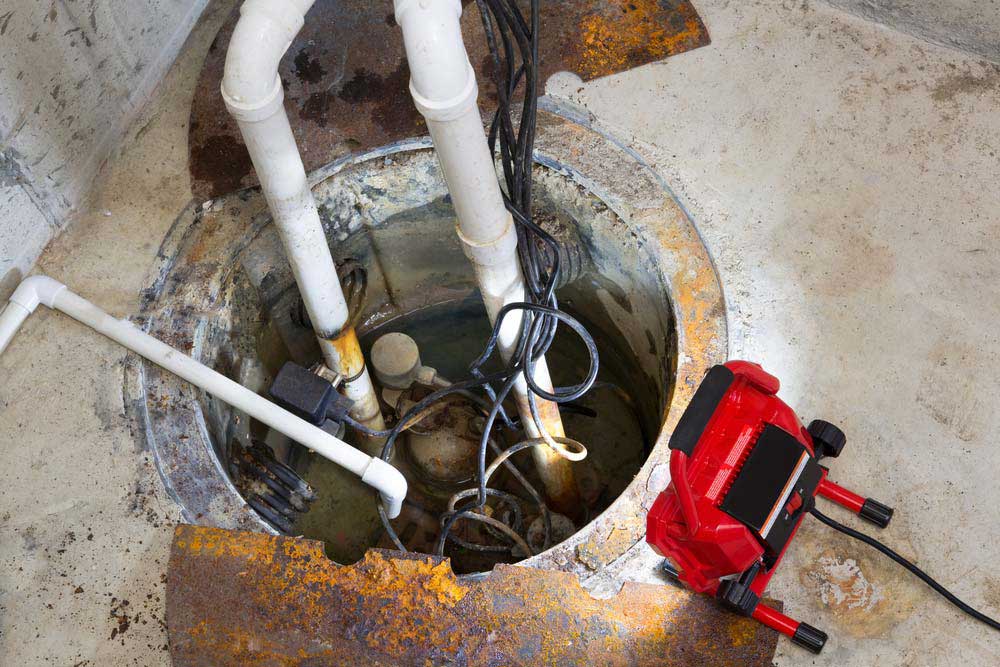An Guide to Thoroughly Taking Care of a Sump Pump
An Guide to Thoroughly Taking Care of a Sump Pump
Blog Article
Presented here underneath you'll find a good deal of outstanding facts all about Cleaning & Maintenance Tips for Your Home's Sump Pump.

Sump pumps are essential elements in several homes, particularly in areas susceptible to flooding or too much dampness. They aid avoid water damages by effectively getting rid of excess water from cellars or crawl spaces. Nevertheless, like any other appliance, sump pumps require regular upkeep to ensure they function successfully when needed one of the most. Cleaning your sump pump is a vital part of its upkeep, and recognizing exactly how to do it appropriately can save you from expensive repair services and potential catastrophes.
Intro
Maintaining a clean sump pump is essential for its proper performance and durability. Disregarding this necessary task can cause blockages, breakdowns, and inevitably, water damages to your home. As a result, learning how to cleanse a sump pump is crucial for homeowners that count on these gadgets to keep their basements completely dry and safeguarded.
Recognizing the Sump Pump
Prior to diving into the cleansing procedure, it's vital to have a fundamental understanding of how a sump pump works. Commonly installed in a pit or basin below the basement floor, a sump pump includes numerous key elements, including a pump, a float button, and a discharge pipe. When water accumulates in the pit, the float switch activates the pump, which then pumps the water out through the discharge pipeline, far from the building's foundation.
Signs of a Dirty Sump Pump
Knowing when your sump pump needs cleansing is vital for avoiding possible malfunctions. Some common indicators that suggest a dirty sump pump consist of weird sounds throughout operation, decreased water flow, and noticeable debris in the pit. If you see any of these signs, it's important to clean your sump pump promptly to avoid any kind of additional issues.
Planning for Cleaning
Before you begin cleansing your sump pump, it's necessary to take some safety and security precautions. Start by shutting down the power to the pump to stay clear of any kind of electric accidents. Additionally, wear suitable protective gear, such as handwear covers and safety glasses, to shield on your own from dust, debris, and potential pathogens.
Detailed Overview to Cleaning Up a Sump Pump
Turning off the Power
Begin by disconnecting the power supply to the sump pump to prevent any kind of mishaps while cleansing.
Eliminating Particles and Dirt
Use a container or an inside story to eliminate any visible particles, dust, or debris from the sump pit. Dispose of the debris correctly to avoid it from obstructing the pump or the discharge pipe.
Cleaning up the Pump and Drift Switch Over
Once the pit is clear of particles, thoroughly eliminate the pump from the pit. Check the pump and the float switch for any kind of indicators of damage or wear. Use a soft brush or fabric to clean the surfaces and remove any type of collected grime.
Purging the System
After cleaning up the pump and float switch, purge the sump pit with tidy water to remove any kind of continuing to be dust or sediment. This will certainly help guarantee that the pump runs smoothly and successfully.
Checking for Correct Functioning
Prior to reinstalling the pump, execute a quick examination to make sure that the float button activates the pump appropriately. Put some water into the sump pit and observe the pump's procedure. If every little thing is functioning appropriately, you can rebuild the pump and reconnect the power supply.
Upkeep Tips to Keep Your Sump Pump Clean
In addition to periodic cleaning, there are several maintenance ideas you can follow to keep your sump pump in optimal condition:
Final thought
Cleaning your sump pump is an essential facet of its maintenance and ensures that it operates properly when you need it the most. By adhering to the steps laid out in this overview and including regular maintenance right into your regimen, you can expand the lifespan of your sump pump and safeguard your home from water damages.
6 STEPS ON HOW TO CLEAN A SUMP PUMP PROPERLY
UNDERSTANDING SUMP PUMPS
Your sump pump plays a crucial role in protecting your home by managing and removing excess water. It primarily functions as a “shield”, guarding your basement against the damaging effects of water accumulation. The pump is housed in a sump pit in the lowest part of your basement, and its job is to pump out any water that collects there.
During heavy rainfalls or when snow melts rapidly, water can infiltrate your basement, posing potential risks like flooding, structural damage, and harmful mold growth. Here, the sump pump springs into action, pumping out the intruding water and directing it away from your home.
SAFETY FIRST
Before cleaning, remember to prioritize safety. Disconnect the sump pump from the power source to prevent any accidental electric shocks. Also, wear sturdy gloves to protect your hands from any sharp or dirty components within the pump.
REMOVE THE SUMP PUMP
After ensuring your safety, the next step is to remove the sump pump from its pit. Doing this might require careful maneuvering as you don’t want to damage any pump components. Once removed, clean the sump pit to remove any accumulated debris or sludge.
INSPECT THE PUMP
Inspect the pump for any visible signs of wear or damage. Check the power cord, float switch, and impeller housing. If any components look worn out or damaged, consider replacing them to ensure optimal performance.
CLEAN THE PUMP
Thoroughly clean the pump with warm, soapy water. Make sure to rid it of any dirt, gravel, or other debris that might impede its performance. You can use a toothbrush to clean the small, hard-to-reach parts of the pump.
REINSTALL THE SUMP PUMP
Reinstall the pump into the sump pit Make sure it’s positioned correctly to remove the water effectively Once it’s back in place, reconnect it to the power source TEST THE PUMP
Finally, pour some water into the pit to ensure the pump works correctly. It should start automatically and begin pumping out the water; if it doesn’t, check the power source and the positioning of the pump.
Remember, while cleaning your sump pump is an essential part of home maintenance, hiring a professional plumber for a thorough inspection and cleaning at least once a year is also important. This will ensure that your pump is in optimal condition, ready to protect your home from potential water damage.
BEST PRACTICES FOR CLEANING SUMP PUMP DISCHARGE PIPES
Regular Inspection: Regularly inspect your discharge pipes, especially during heavy rainfall or snowmelt periods. Look for any signs of blockage or damage. Early detection of problems can prevent serious issues down the line. Periodic Cleaning: Over time, sediment and debris can accumulate in the discharge pipes, impeding the flow of water. Regular cleaning helps keep the pipes clear and functioning efficiently. You can use a high-pressure water jet to effectively clean the pipes. Insulation During Winter: In colder climates, discharge pipes can freeze, blocking the outflow of water. Protect your discharge pipes from freezing temperatures by insulating them with foam pipe insulation. This will ensure the sump pump can continue to discharge water even in freezing conditions. Proper Positioning: The discharge pipe should be positioned to direct water away from your home’s foundation. Improper positioning can lead to water seeping back into the basement. Ensure the pipe is long enough and angled correctly. Installation of a Check Valve: A check valve prevents water from flowing back into your sump pit after the pump has pushed it out. Installing a check valve helps maintain the efficiency of your sump pump and reduces the risk of flooding. Minimize Pipe Turns: Every curve or turn in the discharge pipe can decrease the efficiency of water flow. By minimizing turns and bends in your discharge pipe, you can increase the efficiency of your sump pump. https://www.fullspeedplumbing.com/how-to-clean-a-sump-pump-properly9999/

As a keen reader about Keep Your Sump Pump Clean, It'll Keep You Dry, I thought sharing that excerpt was worth the trouble. Enjoyed reading our review? Please share it. Let others check it out. Thanks for being here. Kindly pay a visit to our site back soon.
Call Report this page